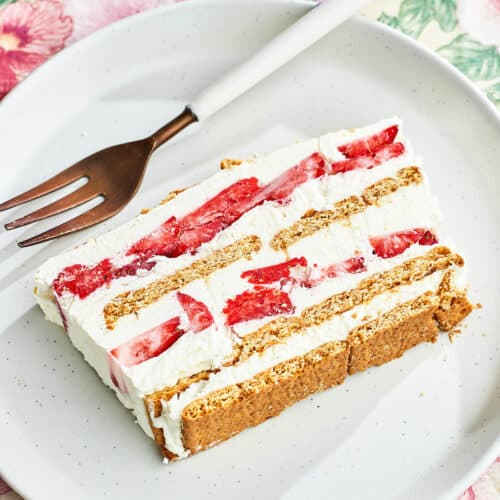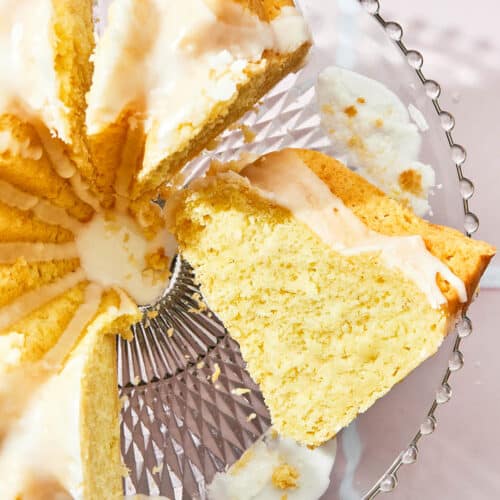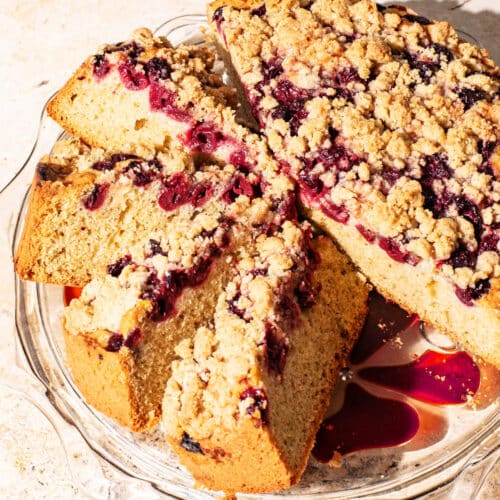A traditional German apple cake made with a simple batter and hasselback apples, this version with large apple pieces gives a strong apple taste. Apple cakes are typically made with a rührteig, a basic German batter - directly translated as stirred batter - with a fairly high butter content and added baking powder for lightness. This recipe comes from Alex's mom, who learned from her grandmother.
If you like this, you'll probably also like German apple sheet cake and German plum cake, both made with yeasted dough. If you're keen on trying some more German recipes, try milchreis too (German rice pudding)!
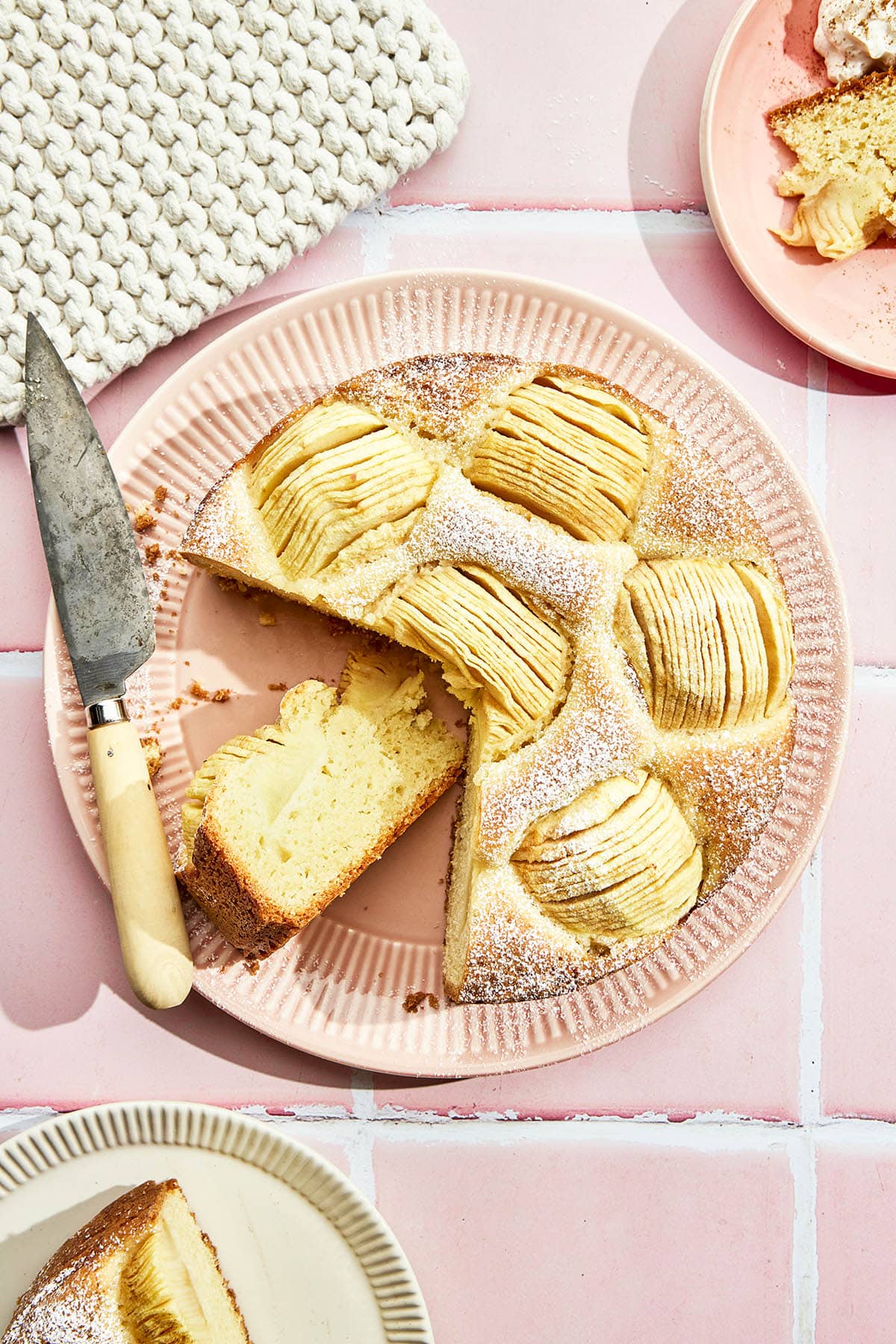
Jump to:
Ingredients

Ingredient Notes and Substitutions
- All purpose flour: if you want to make a higher-fibre cake, you can substitute part of the white flour with whole grain flour. This type of batter works well with whole grains. We haven't tried it with gluten-free flour.
- Milk: for a very rich cake, use cream in place of milk.
- Butter: this should be salted butter. Most German baking recipes don't have added salt because salted butter is used – if you use unsalted, add a half teaspoon of fine salt.
- Apples: choose a good slightly tart baking apple, like Braeburn. Try to use slightly smaller apples so that more of the cake is covered with fruit, rather than 3-4 very large apple halves.
- Make it dairy-free: use a good quality vegan butter that comes in block or stick form, and sub non-dairy milk. For a vegan option try Alex's vegan apple cake instead.
How to Make Apple Cake

Step 1: core, peel, and halve the apples.
Step 2: hasselback the apples using the wooden spoon or chopstick method.
Step 3: cream the butter and sugar until light and fluffy.
Step 4: add the eggs, beating between each addition, and vanilla, then mix again to combine.
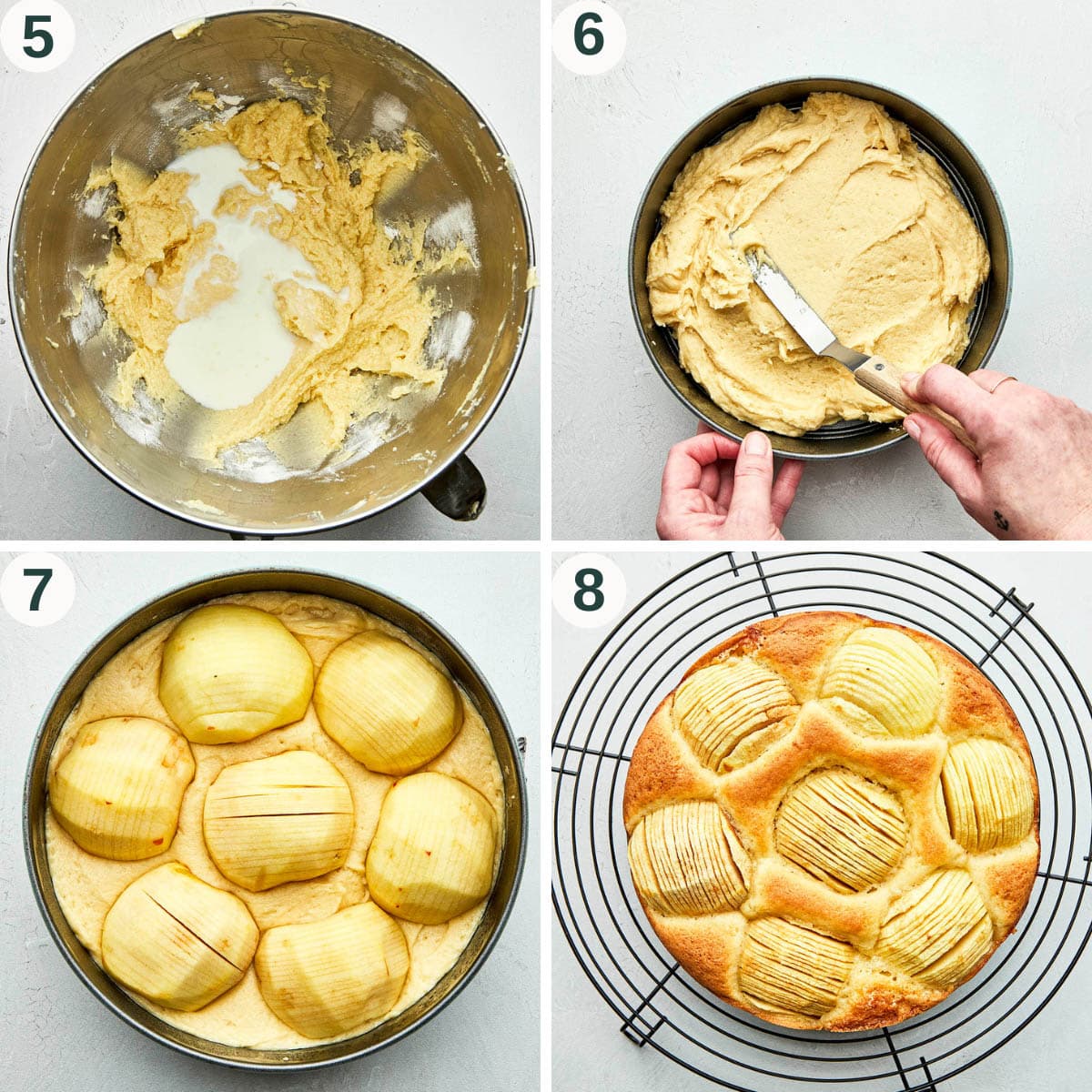
Step 5: add the baking powder and half the flour, mix, then add the milk. Add the remaining flour and mix again.
Step 6: spread the batter into a greased springform tin.
Step 7: place the apples onto the batter and press lightly.
Step 8: bake until golden, about 55 minutes in an 8-inch tin.
Top Tips
- Note that it's a thick batter: this is a spreadable, not pourable, cake batter. It needs to be rather thick to prevent the apples from sinking down during baking, but isn't dry or dense.
- Use room temperature ingredients: this is key. If any ingredients, particularly the eggs, are cold, it will cause the batter to curdle. To quickly bring eggs up to room temperature, submerge them in a bowl of warm (not hot) water for ten minutes.
- If your batter does curdle: place the bowl over a warm water bath and stir until it looks smooth. This will cause the batter to be over-mixed and it might turn out tough, so use ingredients at the right temperature for the best results.
Recipe Notes
In Alex's family this cake is made by setting the cored and halved apples into the batter, then cutting the fruit once it's set into the cake. We found this slightly complicated during testing and it is more consistent and easier for most home bakers to hasselback them with the chopstick method before adding to the batter instead.
While some rührteig recipes will call for a quarter teaspoon of baking soda in addition to the added baking powder, we don't include it here. It does make for a slightly lighter cake but in turn also causes the apples to sink slightly and be overwhelmed by batter.
Some bakers add carbonated water to the batter to add extra lightness. Since most North American households don't keep it on hand the way it is in German households, it isn't included here, and also isn't necessary.
The cake will need a little less time if using a 9-inch or 10-inch springform tin (and most home ovens aren't perfectly accurate), so look for colour. A skewer or toothpick inserted into the batter should come out clean when the cake is finished baking.
How to Store
Storage: keep in a sealed container at room temperature for a couple of days. The cake becomes dry and dense in the fridge, so it's best to eat soon after baking.
Freezing: transfer the cooled cake to an airtight container and freeze for up to a month. Thaw at room temperature.
FAQ
What's the best apple to use in a cake?
A very good baking apple is Braeburn. If you can get it, Belle de Boskoop is ideal for German apple cake.
Do I need to peel the apples?
No. If you prefer to leave the peel on the apples, do so. Try to choose one with a thin skin and not something like granny smith.
Why did my batter curdle or split?
If your batter is curdling, or looks lumpy, this is almost always due to adding cold ingredients like refrigerated eggs or milk to the mix. This solidifies the creamed butter. Using room temperature ingredients should make for a nice smooth cake batter.
If you make this German Apple Cake recipe or any other cake recipes on the Baked Collective, please take a moment to rate the recipe and leave a comment below. It’s such a help to others who want to try the recipe. For more baking, follow along on Instagram, TikTok, and YouTube.
German Apple Cake
Equipment
- Measuring cups and spoons or a digital kitchen scale
- Mixing bowl
- Electric hand or standing mixer
- 8-inch springform pan
Ingredients
- 4-6 medium apples* peeled, cored, and halved
- ⅔ cup salted butter** room temperature
- ¾ cup sugar
- 3 large eggs room temperature
- 1 teaspoon vanilla extract
- 2 cups all-purpose white flour divided
- 2 tablespoons baking powder
- Scant ¼ cup whole milk room temperature
Instructions
- Preheat the oven to 325°F (170°C) and lightly grease an 8-inch (21 cm) spring form tin with butter.
- Peel, core, and halve the apples. Set each cored-side down on a cutting board and place a chopstick or wooden spoon on each side of the apple. Cut thin parallel slices with a knife (the chopsticks will stop it from cutting all the way through) to hasselback the apples.4-6 medium apples*
- Add the butter and sugar to a large mixing bowl or the bowl of a stand mixer. Beat on high speed for 4-5 minutes, or until creamy and light.⅔ cup salted butter**, ¾ cup sugar
- Add the eggs one at a time, beating between each addition, until well incorporated. Beat in the vanilla.3 large eggs, 1 teaspoon vanilla extract
- Add half of the flour and all of the baking powder. Mix on low speed until combined.2 cups all-purpose white flour, 2 tablespoons baking powder
- Mix in the milk, then add the remaining flour and mix until no streaks of flour remain. Don’t over-mix.Scant ¼ cup whole milk
- Bake for 50-55 minutes, or until golden and the cake passes a skewer test. Cool for 10 minutes in the tin before removing the sides and cooling fully on a wire rack. Serve with whipped cream.

